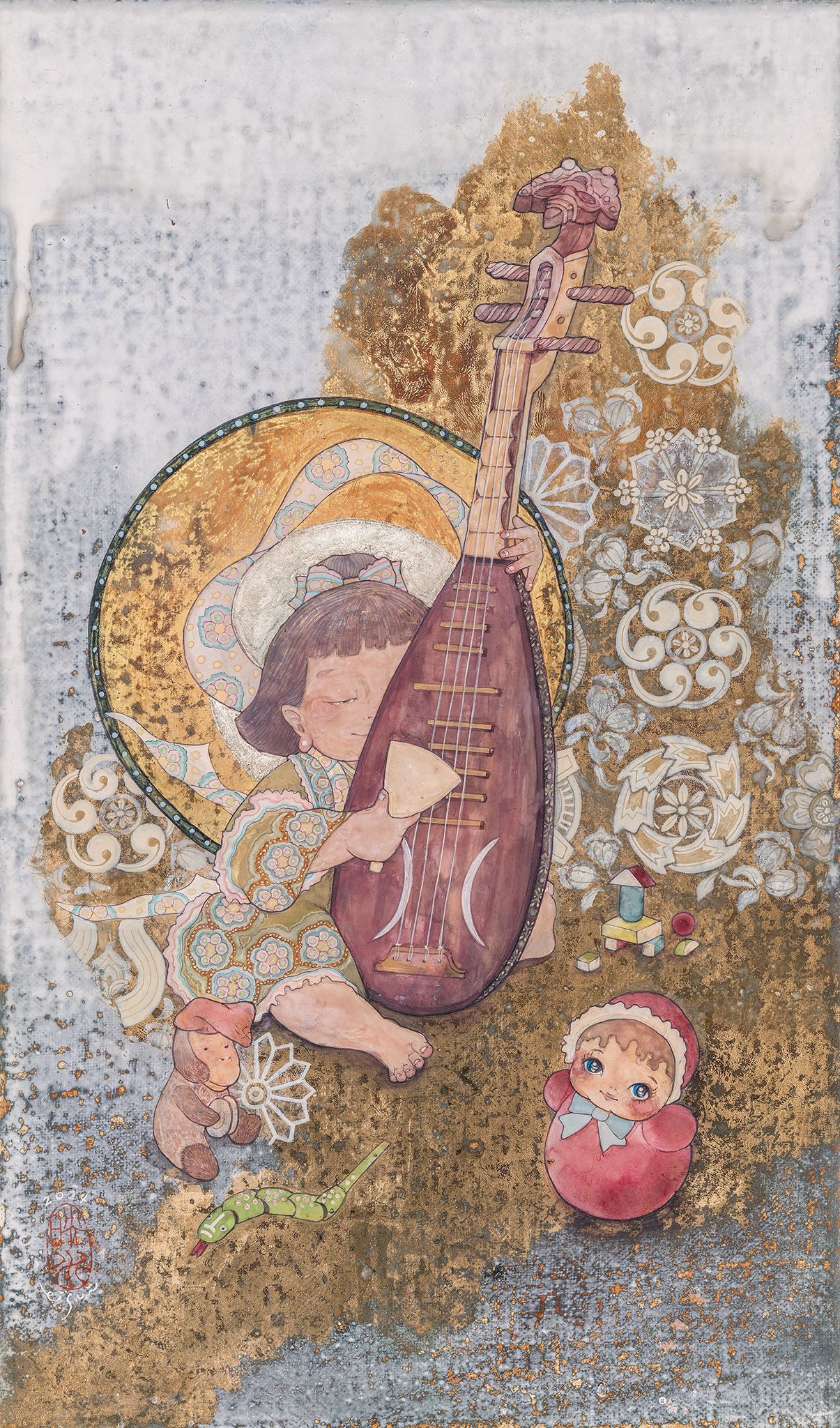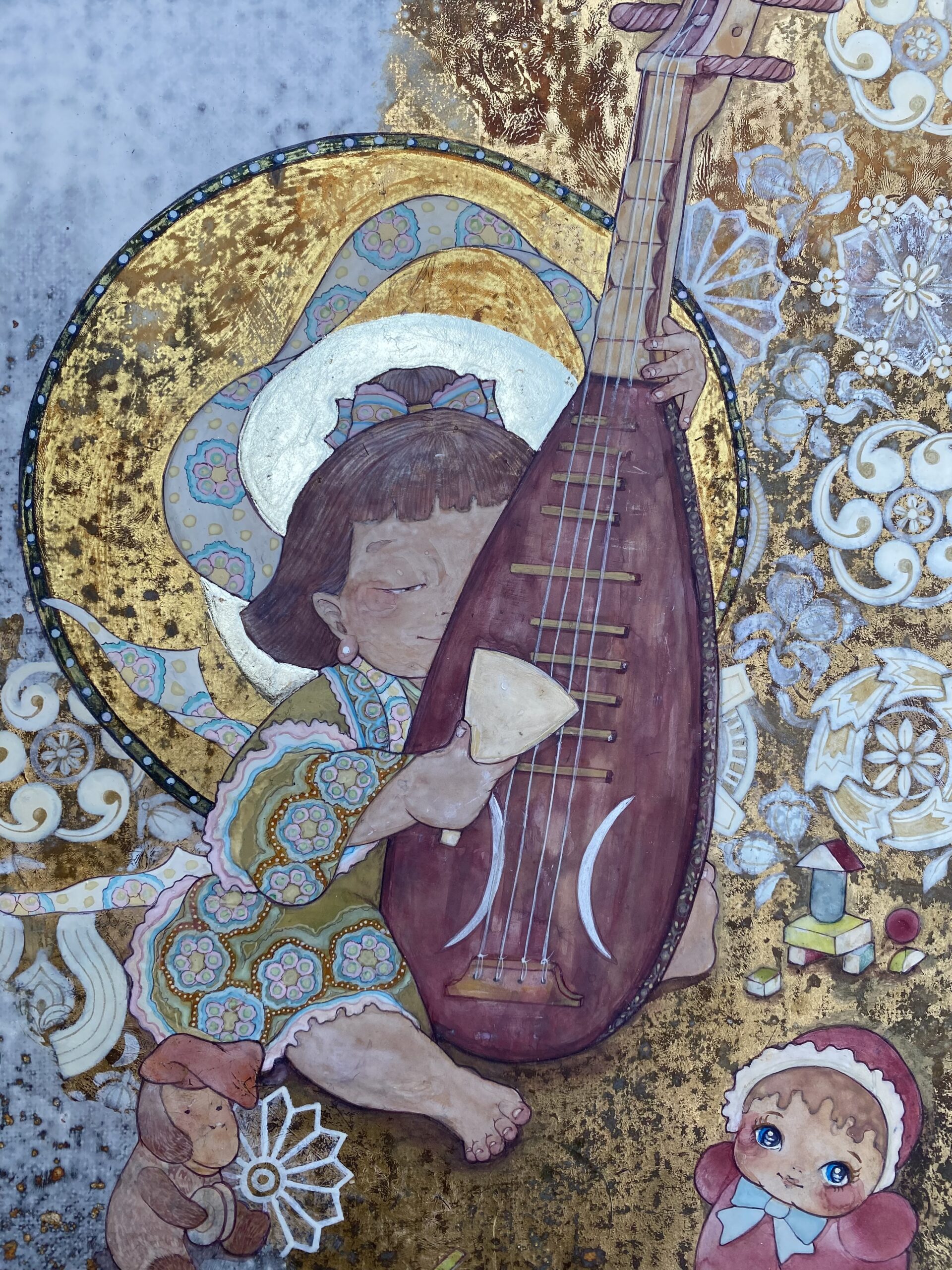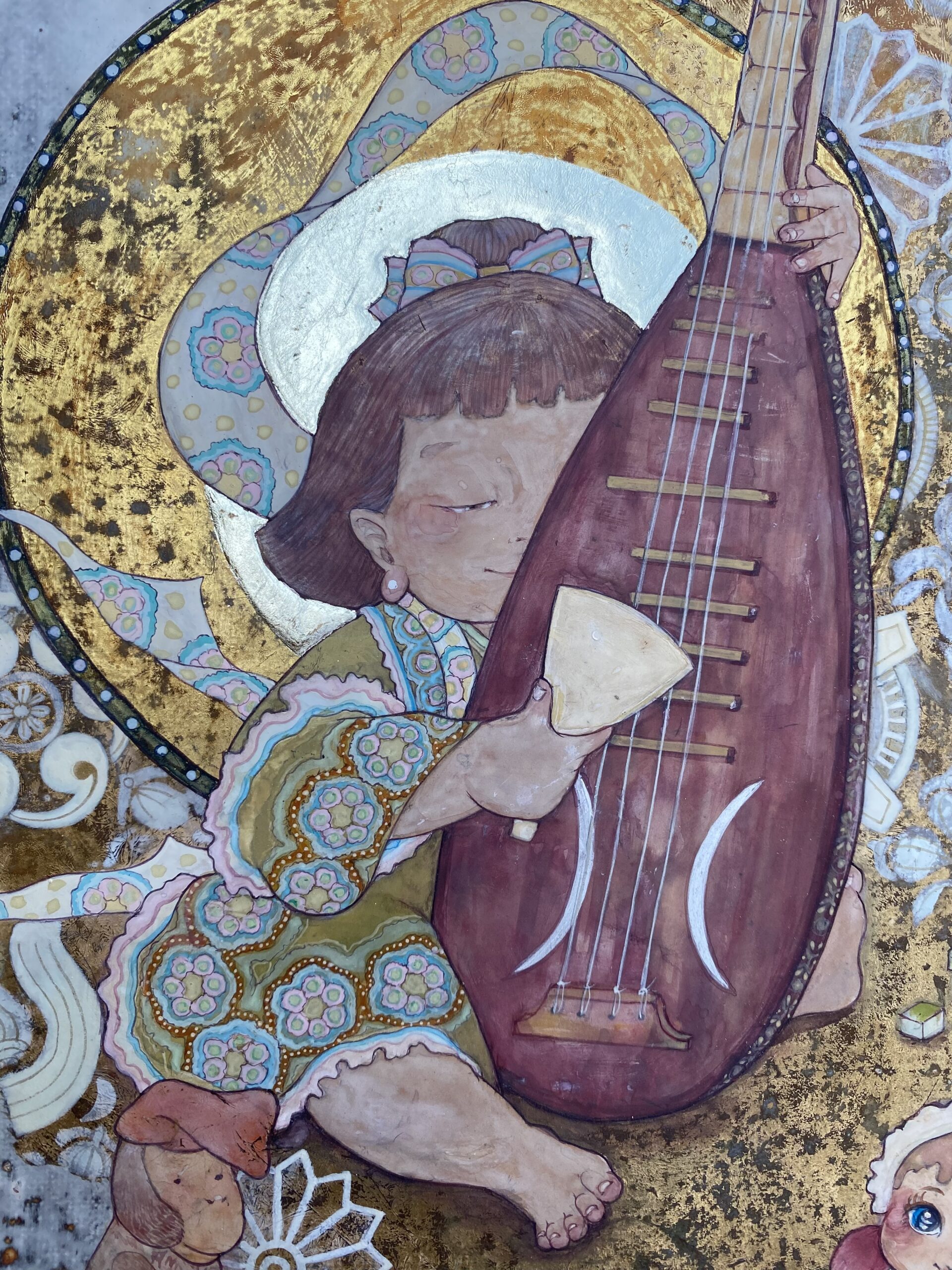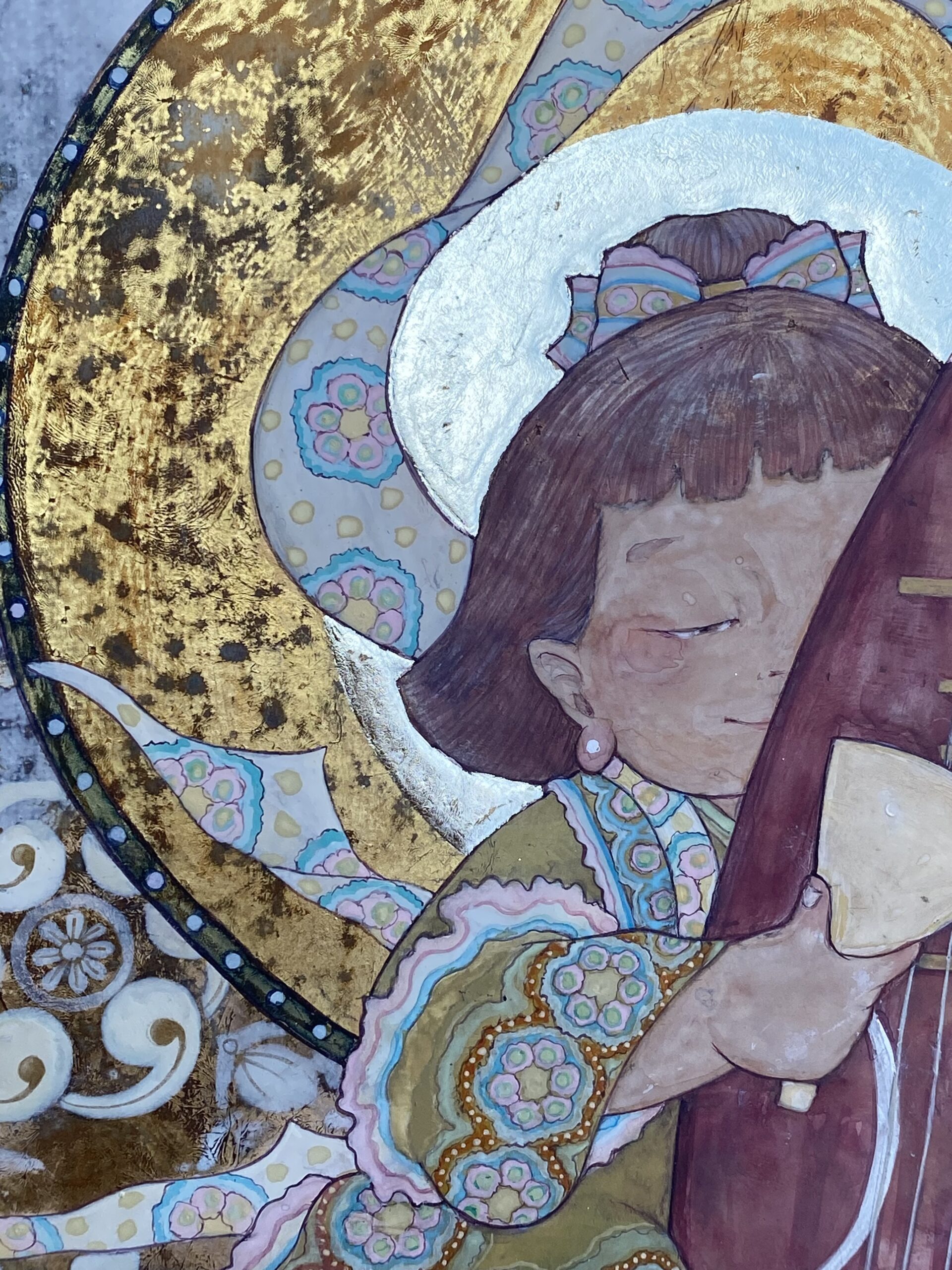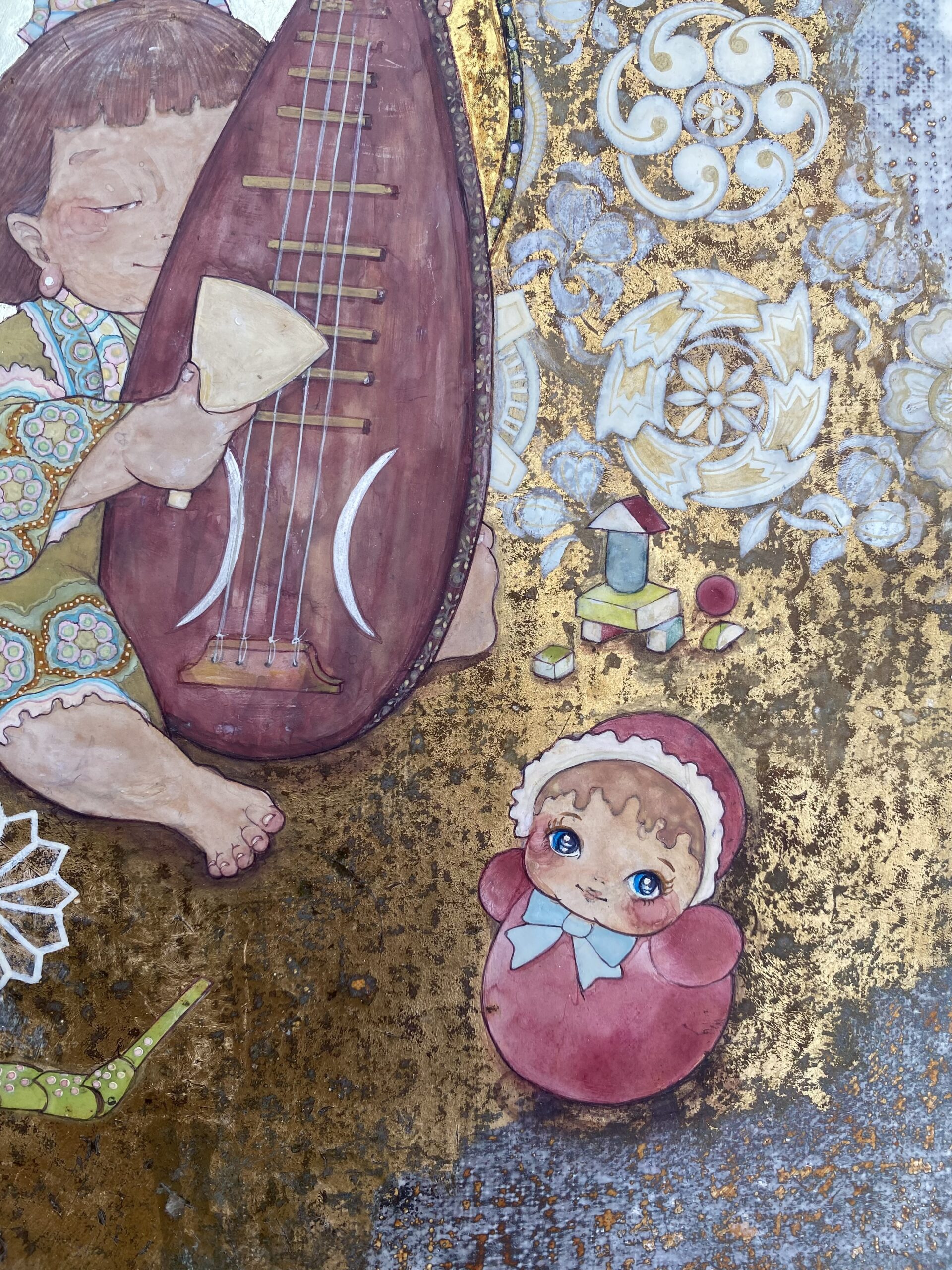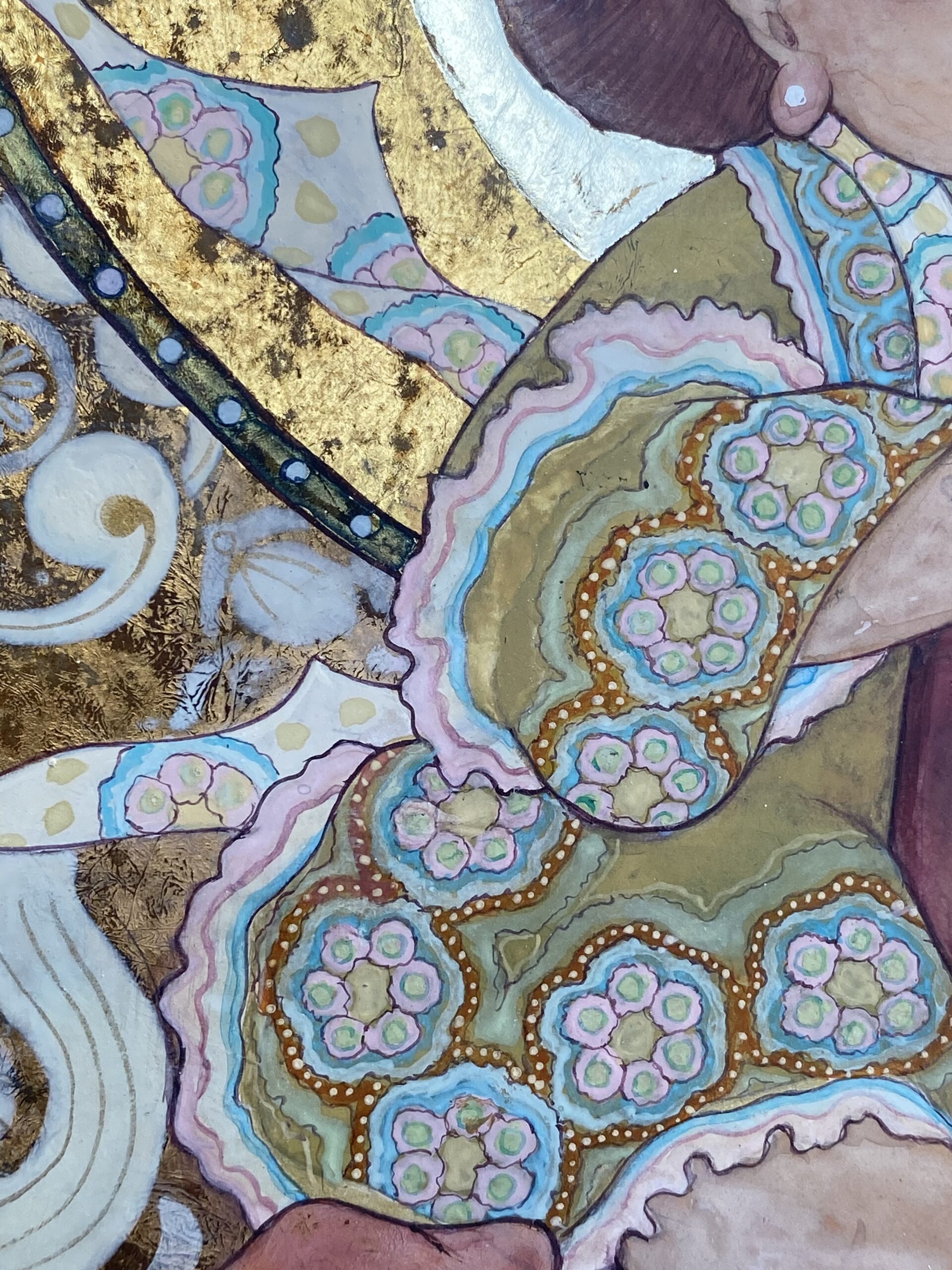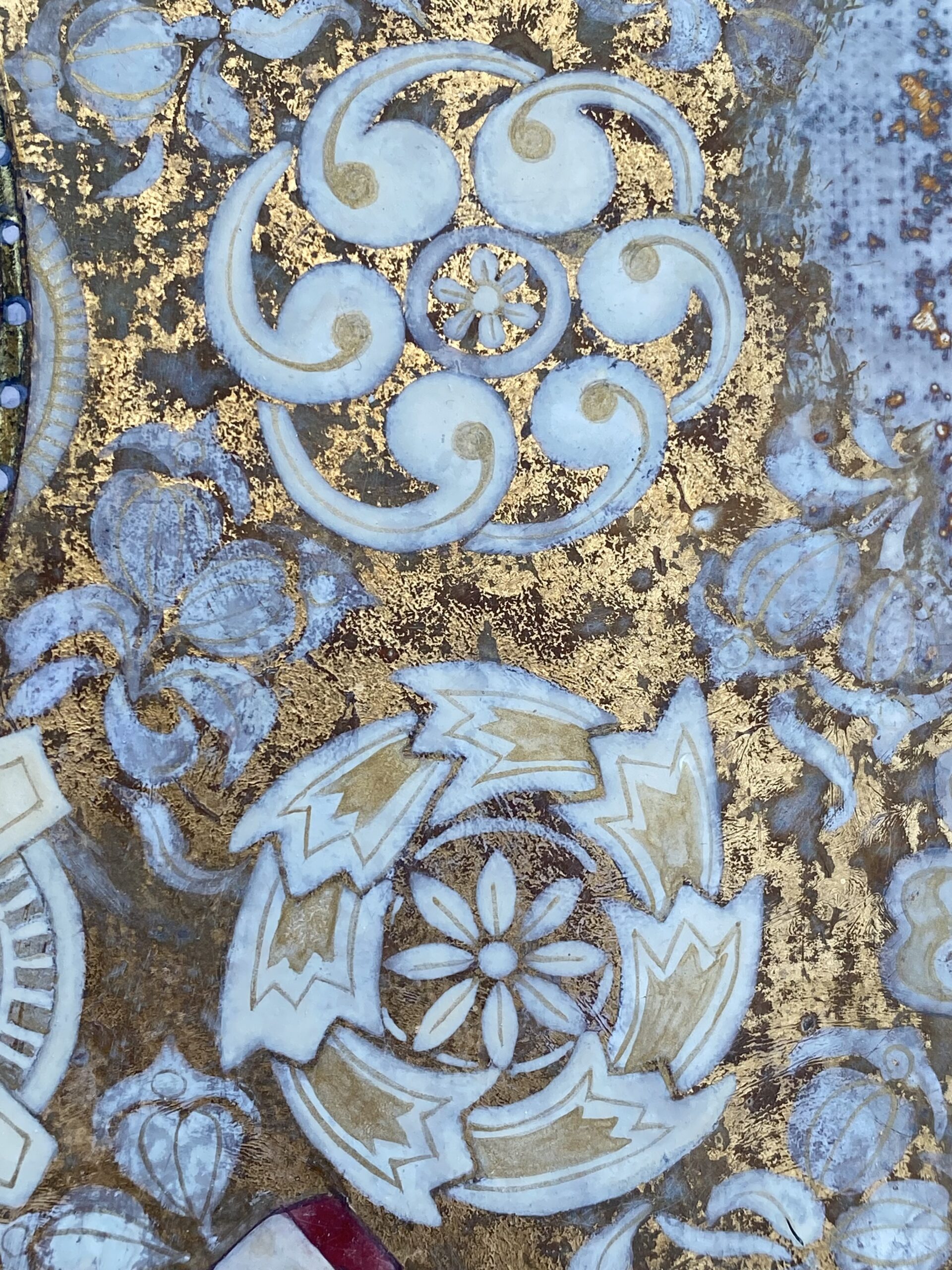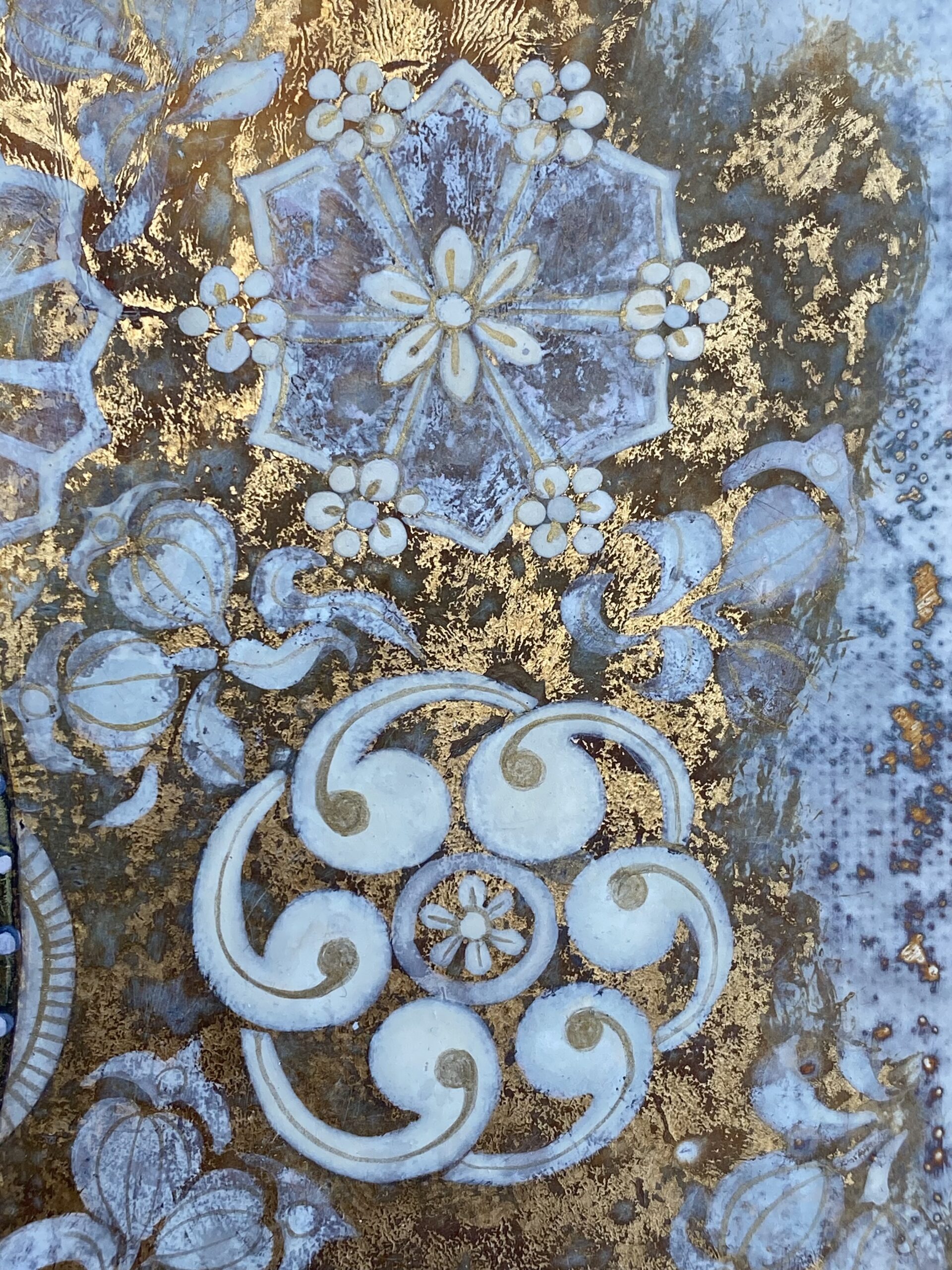Painting
Baby Benten
Story
Just like humans and animals, the gods also exist within the cycle of reincarnation.
The Baby Series is based on the idea that if all beings undergo reincarnation, then even the gods must have once been born into this world. This series depicts deities in their early childhood—innocent, pure, and endearing—before they became bodhisattvas and divine beings who vowed to save people from suffering.
Benzaiten originally comes from Sarasvati, a Hindu goddess in India, who is said to be the incarnation of the Sarasvati River.
Sarasvati is often depicted playing a musical instrument by the water, and she is also believed to be a serpent deity. Due to this connection, Benzaiten in Japan became associated with Uga-jin, a serpent deity in syncretic Buddhist and Shinto traditions, and is sometimes depicted in a serpent form.
Over time, she came to be revered not only as a goddess of art, music, and talent, but also as a war deity.
When depicted as the goddess of the arts, she holds a biwa (a Japanese lute).
When depicted as a war deity, she takes on a form with eight arms, wielding various weapons in a fierce and powerful stance.
Benzaiten and the Seven Lucky Gods
Benzaiten is best known as the only female deity among the Seven Lucky Gods (Shichifukujin), a group of deities believed to bring good fortune, prosperity, and longevity in Japanese folklore.
The Seven Lucky Gods include:
Ebisu (god of prosperity and fishermen)
Daikokuten (god of wealth and commerce)
Bishamonten (god of warriors and protection)
Benzaiten (goddess of wisdom, music, and fortune)
Fukurokuju (god of happiness and longevity)
Jurojin (god of longevity and wisdom)
Hotei (god of contentment and good fortune)
However, it is said that the original group of deities was actually eight, including Kisshōten (Sri Mahadevi).
During the Nara period, Kisshōten gained popularity among the aristocracy as a divine beauty and idol-like figure.
Benzaiten was initially seen as her younger sister-like companion, but during the Warring States period, she emerged as a war goddess, gaining the devotion of many samurai and military commanders. Over time, her status rose, surpassing Kisshōten’s, and her popularity grew among the common people.
Some say that due to this historical shift, Kisshōten eventually disappeared from the Treasure Ship (Takara-bune), leaving Benzaiten as the only female deity among the Seven Lucky Gods.
There is also a legend that Benzaiten and Kisshōten competed for the favor of Bishamonten, the only young and handsome deity among the Seven Lucky Gods.
In fact, Kisshōten is traditionally considered Bishamonten’s wife, but in this tale, she gracefully stepped aside, allowing Benzaiten to remain on the Treasure Ship.
Imagining Baby Benzaiten
Inspired by these stories, I imagined what Benzaiten might have been like as a child and created Baby Benzaiten.
She is a spirited little princess, full of curiosity and determination. She has loved the biwa since childhood and, even when it was too large for her tiny hands to reach, she persistently practiced with unwavering dedication.
In this painting, Baby Benzaiten is holding a small music recital to perform the song she has worked so hard to master. She has gathered her cherished toy friends as an audience, ready to showcase her long-awaited performance.
The building blocks in the painting symbolize the treasure pagoda held by Bishamonten.
The serpent toy represents Benzaiten’s connection to the snake deity, inspired by the tradition of offering loquat-shaped sweets to symbolize the Year of the Snake.
The Baby Series is based on the idea that if all beings undergo reincarnation, then even the gods must have once been born into this world. This series depicts deities in their early childhood—innocent, pure, and endearing—before they became bodhisattvas and divine beings who vowed to save people from suffering.
Benzaiten originally comes from Sarasvati, a Hindu goddess in India, who is said to be the incarnation of the Sarasvati River.
Sarasvati is often depicted playing a musical instrument by the water, and she is also believed to be a serpent deity. Due to this connection, Benzaiten in Japan became associated with Uga-jin, a serpent deity in syncretic Buddhist and Shinto traditions, and is sometimes depicted in a serpent form.
Over time, she came to be revered not only as a goddess of art, music, and talent, but also as a war deity.
When depicted as the goddess of the arts, she holds a biwa (a Japanese lute).
When depicted as a war deity, she takes on a form with eight arms, wielding various weapons in a fierce and powerful stance.
Benzaiten and the Seven Lucky Gods
Benzaiten is best known as the only female deity among the Seven Lucky Gods (Shichifukujin), a group of deities believed to bring good fortune, prosperity, and longevity in Japanese folklore.
The Seven Lucky Gods include:
Ebisu (god of prosperity and fishermen)
Daikokuten (god of wealth and commerce)
Bishamonten (god of warriors and protection)
Benzaiten (goddess of wisdom, music, and fortune)
Fukurokuju (god of happiness and longevity)
Jurojin (god of longevity and wisdom)
Hotei (god of contentment and good fortune)
However, it is said that the original group of deities was actually eight, including Kisshōten (Sri Mahadevi).
During the Nara period, Kisshōten gained popularity among the aristocracy as a divine beauty and idol-like figure.
Benzaiten was initially seen as her younger sister-like companion, but during the Warring States period, she emerged as a war goddess, gaining the devotion of many samurai and military commanders. Over time, her status rose, surpassing Kisshōten’s, and her popularity grew among the common people.
Some say that due to this historical shift, Kisshōten eventually disappeared from the Treasure Ship (Takara-bune), leaving Benzaiten as the only female deity among the Seven Lucky Gods.
There is also a legend that Benzaiten and Kisshōten competed for the favor of Bishamonten, the only young and handsome deity among the Seven Lucky Gods.
In fact, Kisshōten is traditionally considered Bishamonten’s wife, but in this tale, she gracefully stepped aside, allowing Benzaiten to remain on the Treasure Ship.
Imagining Baby Benzaiten
Inspired by these stories, I imagined what Benzaiten might have been like as a child and created Baby Benzaiten.
She is a spirited little princess, full of curiosity and determination. She has loved the biwa since childhood and, even when it was too large for her tiny hands to reach, she persistently practiced with unwavering dedication.
In this painting, Baby Benzaiten is holding a small music recital to perform the song she has worked so hard to master. She has gathered her cherished toy friends as an audience, ready to showcase her long-awaited performance.
The building blocks in the painting symbolize the treasure pagoda held by Bishamonten.
The serpent toy represents Benzaiten’s connection to the snake deity, inspired by the tradition of offering loquat-shaped sweets to symbolize the Year of the Snake.
Summary
Baby Benten
Media: Wood panel, soil, Japanese tube paint, acrylic emulsion, gold leaf, water gold leaf, brass foil Tamamushi leaf
Size: M6
Please contact us by Email.
Please feel free to contact us for more information about our activities and works.



